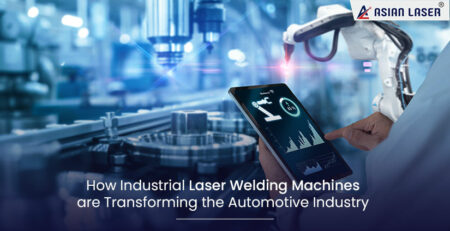Profound clarity on Laser marking and engraving machines
You will find many laser marking and engraving equipment manufacturers in India and across the world who offer high-precision products. Thanks to industrial laws, that give clarity on distinct products and parts identification, as with these regulations, the technique of laser marking and laser engraving are rapidly expanding.
All of these laser machines provide a permanent marking solution and add distinction to your products.
But do you know what sets them apart?
While laser marking and engraving machines may seem similar, there are quite a few differences between them.
The differences between laser marking and laser engraving is mostly related to the effect of the process on the marking surface — it includes the depth of penetration of the laser and how it transforms the overall appearance.
Laser marking abrades the surface of the material, while laser etching removes a portion of the surface area. The difference between laser marking and engraving is the depth to which the laser penetrates the surface.
In this blog, we will give you an overview of each method and its applications to help you determine which laser machine is best for your business.
The Laser Marking Process
Laser marking appears when the beam interacts with the surface of a material, slightly altering its appearance.
- It is produced by moving a low-powered beam slowly across the substance using a method called discoloration. It creates high-contrast marks without disrupting the surface of material.
- The laser heats the material, causing oxidation under the surface and turning the material black.
- The laser marking machine applies low temperatures to metal to strengthen the exterior.
Laser marking differs from laser engraving in many ways:
- Also referred to as laser coloration or dark laser marking, and searing for plastic substances or annealing for metals.
- There are four standard types of laser marking. They can be classified as annealing, carbon migration, foaming, and coloration.
- It’s commonly used in the healthcare industry for stainless steel and titanium parts. You can also use it on other materials with these machines.
- A laser marker is excellent for bar codes, UID codes, QR codes, logos, and other identifications. To find the best laser marking machine manufacturers in India, contact Asian Laser
The Laser Engraving Process
Laser engraving is a technique where the laser beam physically insulates the texture of the material to create a gash that reflects an image.
- The laser produces high heat during the engraving process that causes the material to vaporise.
- It is one of the quickest methods, as the substance is evaporated with each pulse.
- It creates a cavity in the surface that is striking to the eye and touch.
Although engraving is a part of laser marking, it still varies in different ways:
-
- There are three types of laser engraving. They are etching, deep laser engraving, and laser ablation.
- It is the most common choice for people who are looking to customise objects.
Maximum engraving intensity is 0.020″ in metals but can go as deep as 0.125″ in substances such as graphite. - Laser machines are the quickest way to engrave different types of materials.
It’s great for parts expected to undergo high damage. - Laser engraving is typically used for engraving serial numbers and logos, among various materials
.
- You can engrave on almost any sort of metal, plastic, wood, leather, and glass surface.
Another essential comparison to make is how laser engraving contrasts to traditional engraving:
- It can be done on different materials.
- It is more apparent than traditional engraving for small objects such as jewellery.
- It provides you with more font possibilities.
- Lesser chance of product destruction or deformation.
- Laser engraving machines are more durable than traditional methods.
Throughout the years, we at Asian Laser, a leading
- laser marking and engraving
equipment manufacturing company, have enhanced the capabilities of our laser machines to ensure that we can meet the distinct needs of the manufacturing industry.
To know more about us, visit Asian Laser




